Ayush K. Rai
Reinforcement Learning meets Masked Video Modeling : Trajectory-Guided Adaptive Token Selection
May 13, 2025Abstract:Masked video modeling~(MVM) has emerged as a highly effective pre-training strategy for visual foundation models, whereby the model reconstructs masked spatiotemporal tokens using information from visible tokens. However, a key challenge in such approaches lies in selecting an appropriate masking strategy. Previous studies have explored predefined masking techniques, including random and tube-based masking, as well as approaches that leverage key motion priors, optical flow and semantic cues from externally pre-trained models. In this work, we introduce a novel and generalizable Trajectory-Aware Adaptive Token Sampler (TATS), which models the motion dynamics of tokens and can be seamlessly integrated into the masked autoencoder (MAE) framework to select motion-centric tokens in videos. Additionally, we propose a unified training strategy that enables joint optimization of both MAE and TATS from scratch using Proximal Policy Optimization (PPO). We show that our model allows for aggressive masking without compromising performance on the downstream task of action recognition while also ensuring that the pre-training remains memory efficient. Extensive experiments of the proposed approach across four benchmarks, including Something-Something v2, Kinetics-400, UCF101, and HMDB51, demonstrate the effectiveness, transferability, generalization, and efficiency of our work compared to other state-of-the-art methods.
Video Anomaly Detection via Spatio-Temporal Pseudo-Anomaly Generation : A Unified Approach
Nov 27, 2023



Abstract:Video Anomaly Detection (VAD) is an open-set recognition task, which is usually formulated as a one-class classification (OCC) problem, where training data is comprised of videos with normal instances while test data contains both normal and anomalous instances. Recent works have investigated the creation of pseudo-anomalies (PAs) using only the normal data and making strong assumptions about real-world anomalies with regards to abnormality of objects and speed of motion to inject prior information about anomalies in an autoencoder (AE) based reconstruction model during training. This work proposes a novel method for generating generic spatio-temporal PAs by inpainting a masked out region of an image using a pre-trained Latent Diffusion Model and further perturbing the optical flow using mixup to emulate spatio-temporal distortions in the data. In addition, we present a simple unified framework to detect real-world anomalies under the OCC setting by learning three types of anomaly indicators, namely reconstruction quality, temporal irregularity and semantic inconsistency. Extensive experiments on four VAD benchmark datasets namely Ped2, Avenue, ShanghaiTech and UBnormal demonstrate that our method performs on par with other existing state-of-the-art PAs generation and reconstruction based methods under the OCC setting. Our analysis also examines the transferability and generalisation of PAs across these datasets, offering valuable insights by identifying real-world anomalies through PAs.
Motion Aware Self-Supervision for Generic Event Boundary Detection
Oct 12, 2022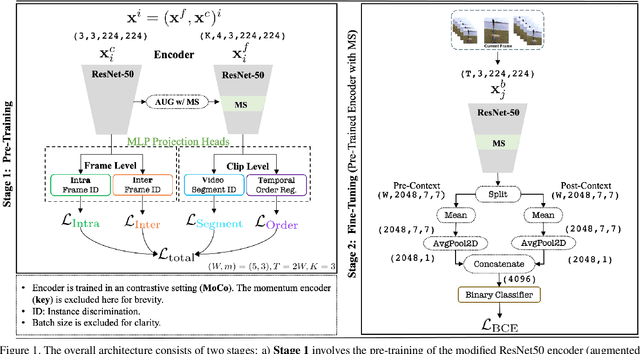
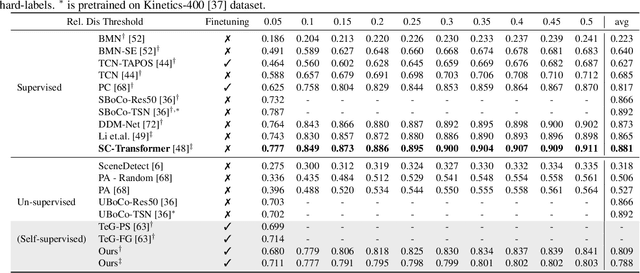

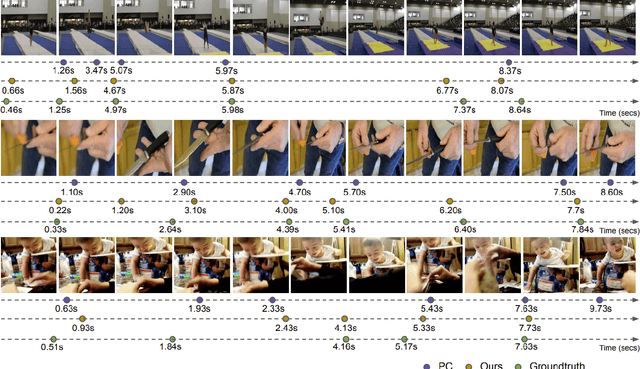
Abstract:The task of Generic Event Boundary Detection (GEBD) aims to detect moments in videos that are naturally perceived by humans as generic and taxonomy-free event boundaries. Modeling the dynamically evolving temporal and spatial changes in a video makes GEBD a difficult problem to solve. Existing approaches involve very complex and sophisticated pipelines in terms of architectural design choices, hence creating a need for more straightforward and simplified approaches. In this work, we address this issue by revisiting a simple and effective self-supervised method and augment it with a differentiable motion feature learning module to tackle the spatial and temporal diversities in the GEBD task. We perform extensive experiments on the challenging Kinetics-GEBD and TAPOS datasets to demonstrate the efficacy of the proposed approach compared to the other self-supervised state-of-the-art methods. We also show that this simple self-supervised approach learns motion features without any explicit motion-specific pretext task.
Dynamic Channel Selection in Self-Supervised Learning
Jul 25, 2022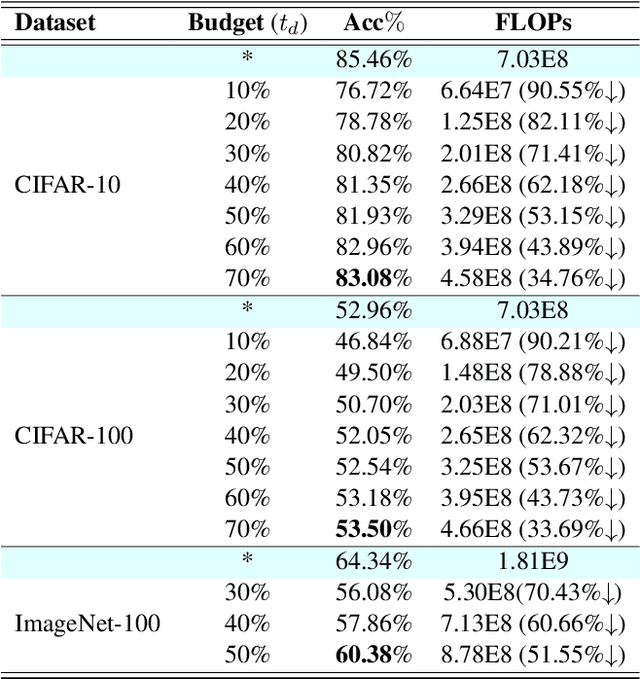
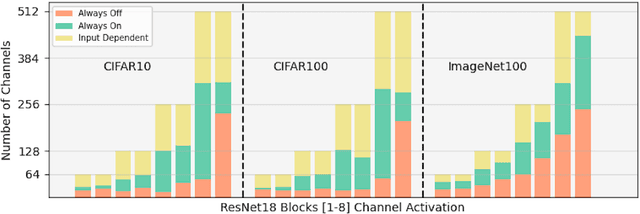
Abstract:Whilst computer vision models built using self-supervised approaches are now commonplace, some important questions remain. Do self-supervised models learn highly redundant channel features? What if a self-supervised network could dynamically select the important channels and get rid of the unnecessary ones? Currently, convnets pre-trained with self-supervision have obtained comparable performance on downstream tasks in comparison to their supervised counterparts in computer vision. However, there are drawbacks to self-supervised models including their large numbers of parameters, computationally expensive training strategies and a clear need for faster inference on downstream tasks. In this work, our goal is to address the latter by studying how a standard channel selection method developed for supervised learning can be applied to networks trained with self-supervision. We validate our findings on a range of target budgets $t_{d}$ for channel computation on image classification task across different datasets, specifically CIFAR-10, CIFAR-100, and ImageNet-100, obtaining comparable performance to that of the original network when selecting all channels but at a significant reduction in computation reported in terms of FLOPs.
Investigating Memorability of Dynamic Media
Dec 31, 2020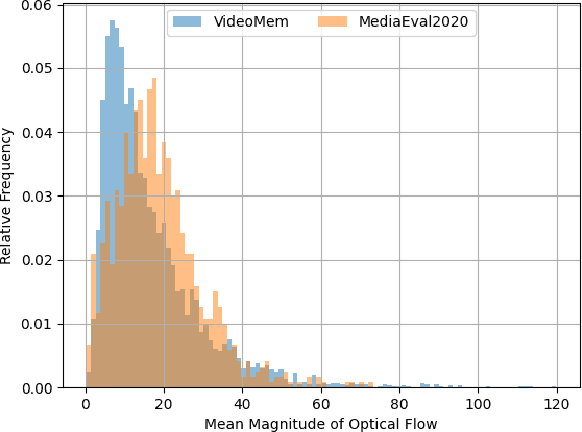

Abstract:The Predicting Media Memorability task in MediaEval'20 has some challenging aspects compared to previous years. In this paper we identify the high-dynamic content in videos and dataset of limited size as the core challenges for the task, we propose directions to overcome some of these challenges and we present our initial result in these directions.
* 3 pages, 1 figure. 1 table
 Add to Chrome
Add to Chrome Add to Firefox
Add to Firefox Add to Edge
Add to Edge